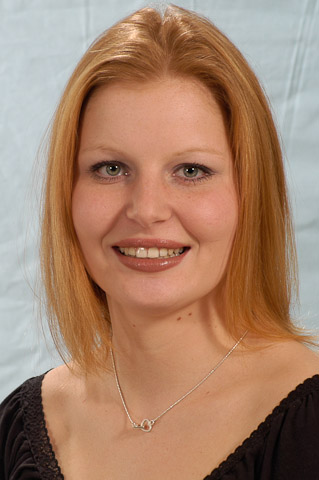
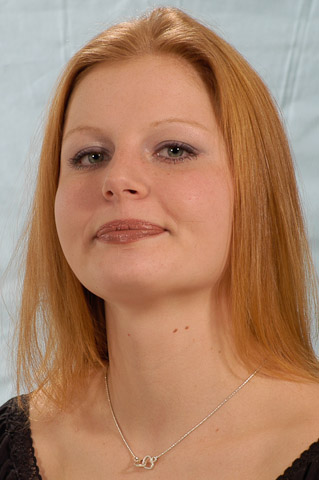
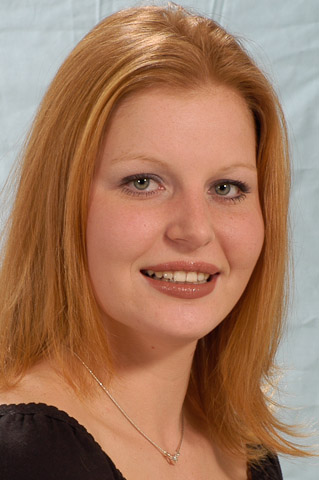
Portraits Examples
Back to Jon Vermilye's Photo & Trip Page
Other Pages:
Animals & Insects
Birds
Chipmunks
Flowers
Landscapes / Scenic
Lighthouses
New England & Nantucket
Oswego
Other
Images
State & National Parks
Theatrical Images
Waterfalls
As I mentioned in the Portrait Photography, Part 2 post, these are all out takes from head shots of student actors - most of them the images we didn't use. I did not have complete control over the poses, backgrounds, etc - the production director often made choices I might have changed. I am using them to point out some suggestions for lighting & camera positions,



For example, the background in many of these images is wrinkled. I would have changed it but for some strange reason, the director liked it. In any case, the first three images show how position & lighting can change a face. Here we have a model with prominent cheeks. Although the first image is my favorite, the shadows from her cheeks stand out too much. We can eliminate them by lowering the key light and tilting the head back, however we were not happy with the change in apparent attitude the new pose created as well as the added roundness to the face. The third image is a compromise - it reduces the cheeks, but keeps much of the mood of the first image.
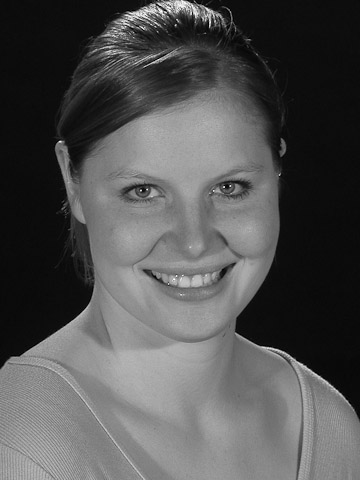
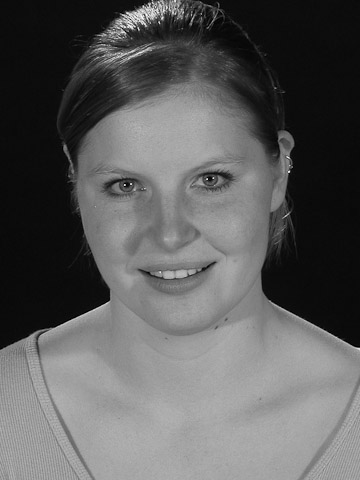
The same actress - In the first image the lighting is mostly butterfly style, which usually works well for women, however the cheek shadow is too strong. By shifting the position of the key to produce short lighting, the face is narrower & the cheeks tamed.
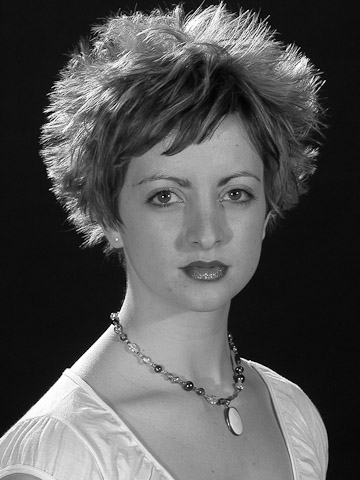
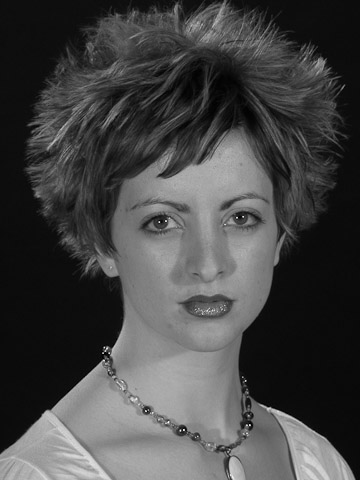
In the first image the hair light is too strong, at least if you want to provide a natural look. The light was backed off in the second. Personally, both the actor & I preferred the first, even though it was overdone.
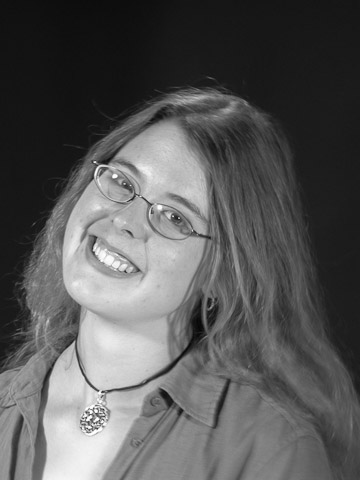
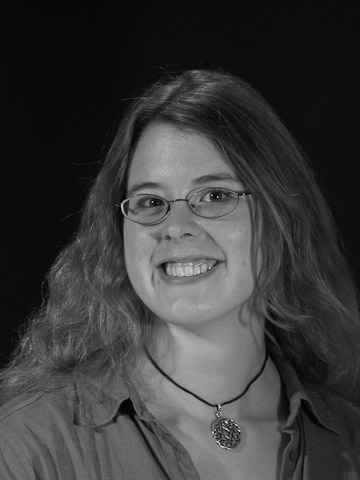
Here the problem is reflections from glasses. It is easy to miss this unless you check your results in a full size monitor; the LCD on your camera generally doesn't provide a large enough or high enough resolution image to show the problem. By shifting the position of the model or lights you can still get an acceptable image while eliminating the reflection. I don't suggest removing the glasses. Although it gets rid of the problem, individuals that normally wear glasses will usually look unnatural without them.
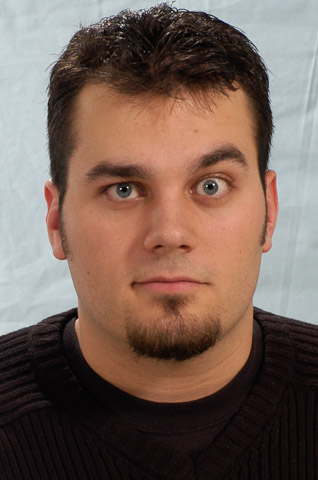
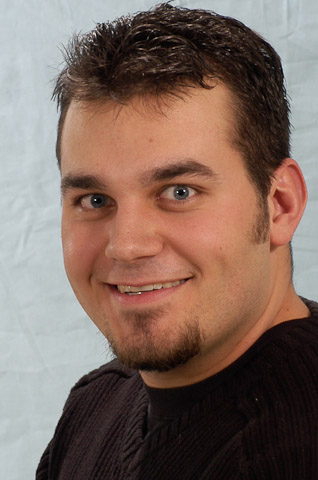
In this case, the actor's had a problem controlling his left eye. No matter how hard we tried, it was always too prominent. The solution was to find a position that balanced the eyes, then adjust the lighting to match the new position.
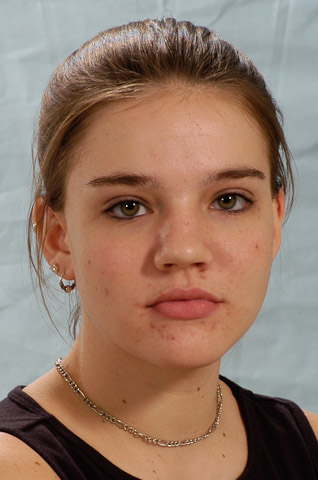
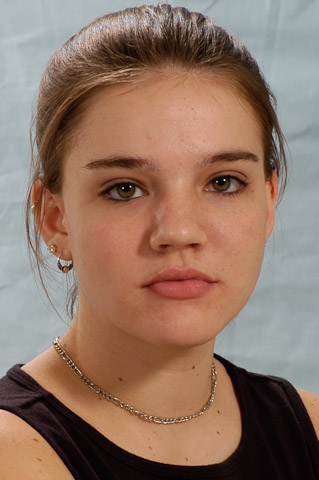
In this case we have an attack of acne. This young actress did not want to have her photograph taken - she wanted to wait until her face cleared up. The problem is we needed the images the next day, so that wasn't a choice. Although there is software designed to specifically fix facial imperfections, in this case a little time spent with the clone stamp cleared up most of the damage without being unrealistic. How much the photographer touches up an image is probably a subject in itself. I prefer to do no more than could be accomplished with makeup, which, by the way is also a subject that could be discussed on its own.
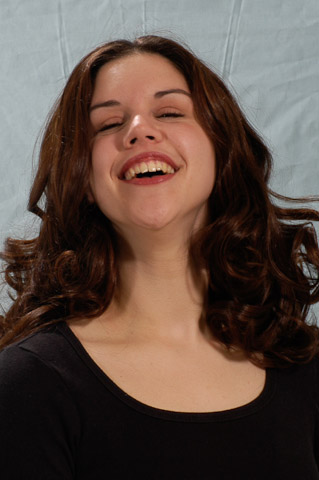
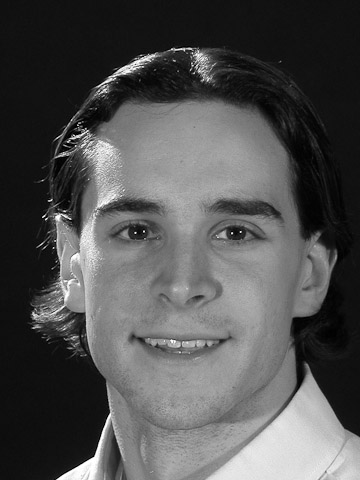
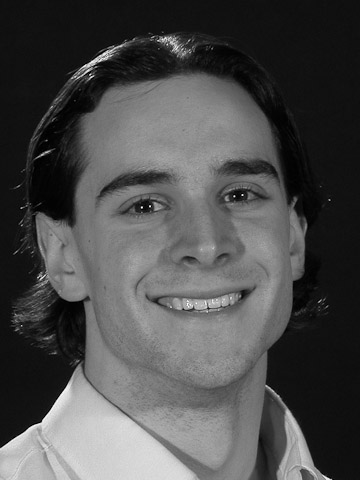
The first two images show what happens when the hair light is poorly aimed or the actor changed their position. You end up with glowing noses, faces, etc. Be sure to take the time to position both hair lights & kickers so that they don't hit the face. You also need to keep an eye on your model after the initial set up. What may have been a good position during the set up will change as the actor shifts position, tilts his or her head, etc.



Props can be useful both for relaxing your subjects and to add a theme to a group of images. In this case a trunk was used. It tied in with the production in that trunks were part of the scenery. The actors were told to do what ever they wanted to do with the trunks - these are a few examples. Again, I can't emphasis how useful a prop is for relaxing your subjects. A child's favorite toy, the flowers in the example below, or almost anything helps the model ignore that huge round piece of glass that is going to stare you down. Real models earn every penny they charge - appearing natural in front of a camera is hard work!


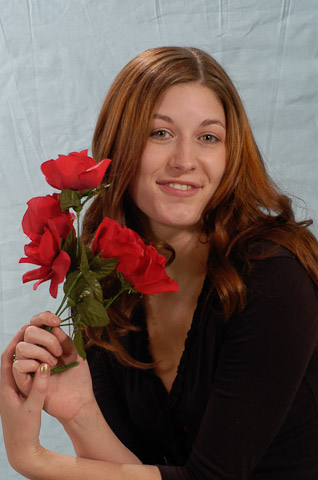
This first image is what often happens when you sit someone who is not a trained model in front of a camera in a studio. Although not an actor (she was the stage manager of a production) I have found that most stage actors have just as much trouble sitting in front of a camera. While they are comfortable performing in front of an audience of hundreds, a camera is a challenge. Again, using a prop such as the flowers in the last image can help. You need to spend time working with your models getting them as comfortable as possible in front of the camera without causing them to freeze into unnatural poses. For me this is the most difficult part of portrait photography; why I prefer to shoot scenery!
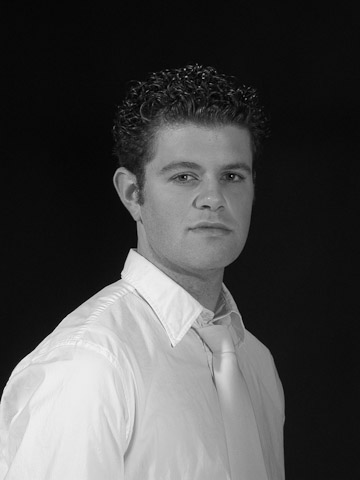
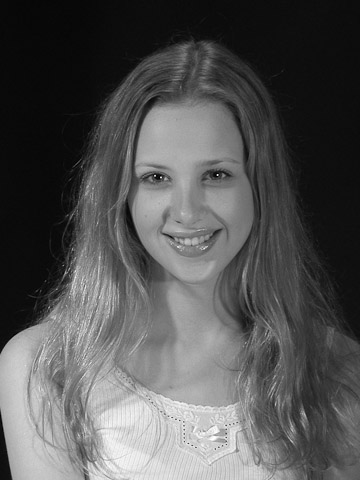

A couple of more samples - The first image is an example of too little hair light separating the subject from a black background. The blond model in the second image is able to get away with this amount of hair light, however the dark hair almost disappears into the background. The third image has enough light to pull the hair out of the background, although I feel there is a bit too much jell to look natural.
This page is maintained by: vermilye@oswego.edu
Last Update:
March 25, 2012